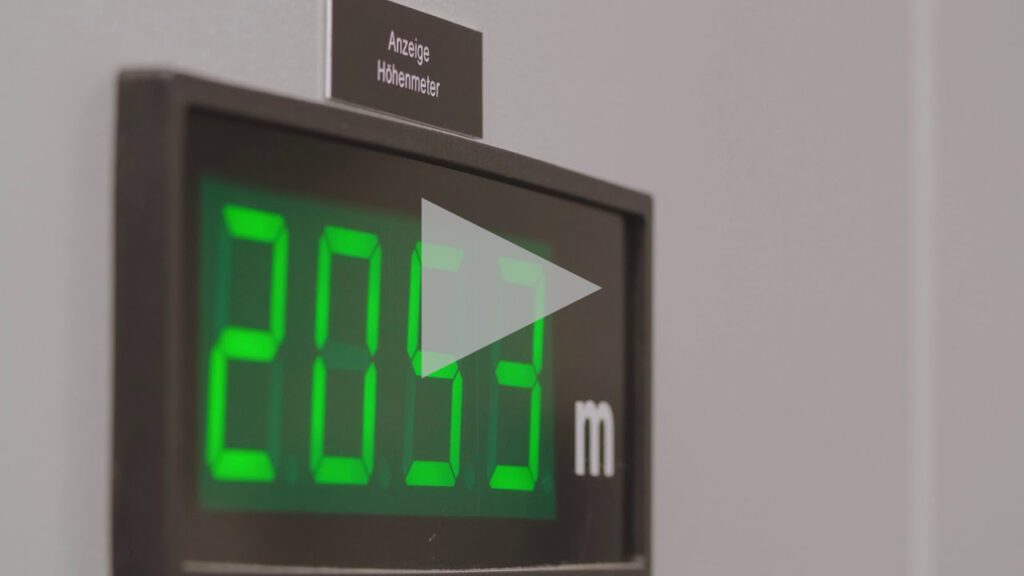


Altitude training
Basics
For an optimal training effect such extreme altitudes are not needed. Altitude simulations around 2,000 to 3,000 metres have proven to be particularly effective. During physical exertion in this altitude range, the body reacts with an increased release of the endogenous hormone EPO (erythropoietin). This stimulates the increased production of red blood cells to supply the organism with the oxygen it needs. In addition, other adaptation mechanisms are optimised and the release of oxygen into the tissue is facilitated or improved.
Accordingly, a wide variety of simulation systems for altitude training are in use for humans – either in negative pressure chambers with an actual simulation of the conditions on the mountain, or with reduced oxygen supply via the breathing air, which is usually done with masks.
Basically both methods, i.e. reduced air pressure on the one hand or reduction of oxygen in the breathing air on the other, lead to a stimulation of increased formation of red blood cells. The “real” simulation, i.e. the reduction of the air pressure, has proven to be more effective. The reason for this is that other adaptation mechanisms are more strongly promoted with this method. This applies in particular to the formation of DPG (2,3 Di Phospho Glycerate), a mediator that causes a faster release of the oxygen molecule into the tissue and thus an increased metabolic rate.
Strato-Cobe®
Altitude training for horses
So the challenge is purely technical. Air pressure conditions must be created that simulate an altitude of 2,000 – 3,000 metres and one must be able to subject horses to controlled athletic stress under these conditions.
The result is the Strato-Cube®: a pressure- resistant container which, like an aircraft fuselage, has to withstand the pressure differences of high altitudes. In this container, horses are exercised under pre- selectable air pressure conditions between 1,000 and 3,000 metres in order to achieve an optimal training effect.
For this purpose, a treadmill with adjustable inclination is used that can perform at speeds of up to 60 km/h. A controlled ventilation system blows cooling air onto the horse to prevent overheating while the set air pressure, and thus the simulated height, remains constant in the chamber.
Individual configuration allows both transportable containers as well as installation in fixed buildings. Because different disciplines in equestrian sports also require different training requirements, each Strato-Cube® is equipped individually making it suitable for gallopers, trotters, endurance or jumping horses. The possible applications even go beyond horses: a customised solution is also available for racing camels, which are very popular in the Arabian region.
The Strato-Cube® can be loaded onto a truck and delivered by normal road transport, depending on where it is needed at a certain point in time. This also facilitates a later relocation, e.g. in case of a change of stable or for a geographically staggered winter training.
For interested horse owners who prefer a permanent solution on site, there are also options for permanent buildings available. These are particularly suitable for large stables if several horses are to be routinely trained at the same time.
About us

Dr Bernhard Lischka is a specialist veterinarian for horses and has been involved with thoroughbred racehorses since his youth. His conception of the Strato-Cube® followed years observing the the South African horse racing scene. There are training facilities at various altitude levels and they constantly and impressively prove the positive significance of altitude training.

Ing. Richard Rebec is a mechanical engineer with many years of experience in the technical planning and supervision of pharmaceutical production facilities. He specialises in the design and implementation of controlled ventilation systems in a wide variety of fields and applications.


